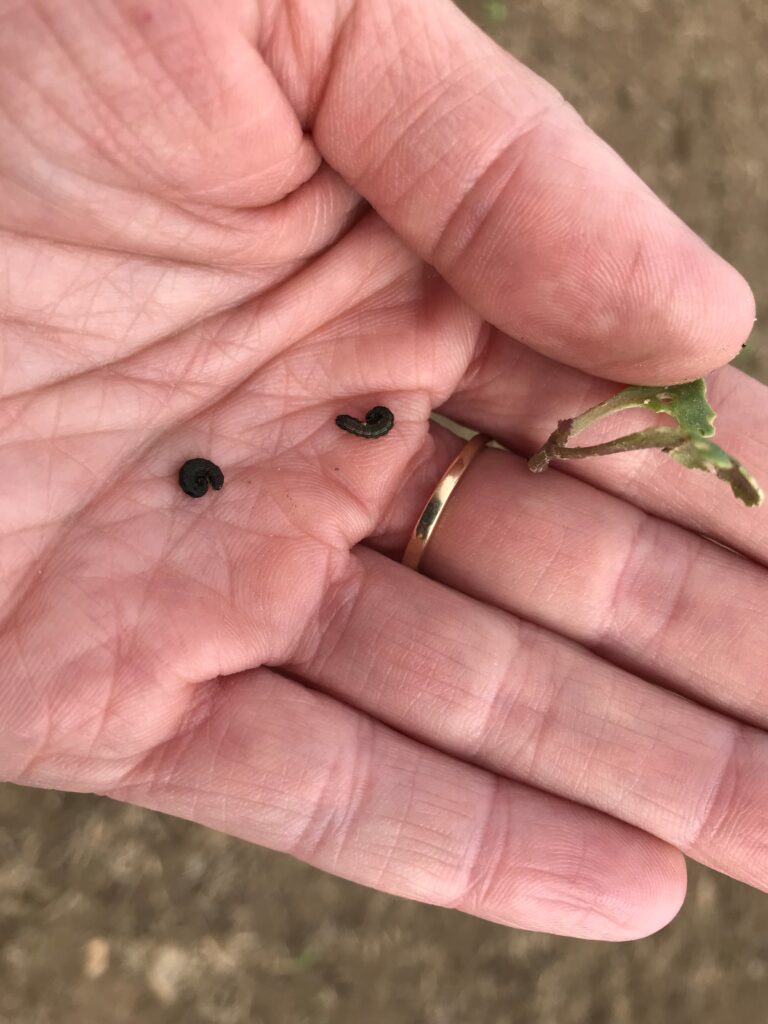Traps south of London and in Essex County have had very high captures of fall armyworm. Winter canola, winter cereals, forages and cover crops should be monitored for larvae – not just limited to the region of these traps. Some fields of newly-seeded winter canola had extensive feeding damage in 2021 and had to be replanted to another crop in spring.
There are no established thresholds for FAW this time of year for fall seeded crops. It is a matter to determining if and how much injury or stand loss is occurring that could impact the crop’s winter survival. The crop, size of the larvae and size of the plants at the time of the feeding, as well as forecasted temperatures will determine if action is needed. FAW do not tend to clip the growing points of cereals and grasses but they do in winter canola and newly seeded forages, if the plants are small enough. Control may be warranted if 25% of the plants have feeding and/or cutting and larvae are still actively feeding. A frost event will kill these larvae. If insecticides are going to be effective, the larvae need to be 2.5 cm or smaller in length. Do not apply insecticides prior to a heavy rain.
Moths may be laying eggs in any green vegetation they find in late August and early September. These include fields with weedy patches, very late planted soybean fields, early planted winter wheat fields, forages and cover crops. Historically, low temperatures delay or halt late flushes of FAW larvae from developing to later instar stages. The base temperature for FAW development is 13 degrees C, meaning that the mean of both the high and low temperature each day needs to be at least 13 degrees for the larvae to continue to grow. If there is a lack of cooler nights this fall, as well as summer-like daily highs they will continue to develop and feed.
Not all of these crops will have products with fall armyworm on the label. Refer to Publication 812, Field Crop Protection Guide and contact your agronomist or OMAFRA specialist for guidance on potential options.

